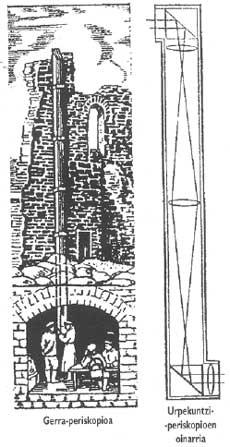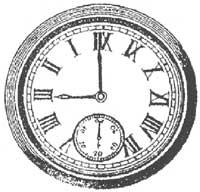Reflection
Introduction
In Article 81 we talk about the propagation and speed of light rays. There we saw that the rays of light spread linearly. Now let's analyze what these rays do when they hit special things and some of their consequences. We all know that light rays affect the mirror surface and are reflected. This reflection is similar to that of a ball hitting the wall. Therefore, due to such a simple phenomenon, can we get some conclusions and uses? The answer is in your hands. Therefore, today we will focus on reflection.
See through things

If we put between a thing I want to see and my eyes an opaque object, can I see it? Or put another way: can you see anything opaque? That question is totally foolish. If the definition of opaque thing is the one that "does not let the rays of light pass by", that question has no logic. Don't think so! Along opaque things, when colliding with the mirrors, it reflects and suffers a deviation, as if the opaque thing were crossed from the object to the sight, but as you can see, the rays only prevent the obstacle.
Roentgen's apparatus has been used in the military arena. Through it you can see the enemy without leaving the trench. Thus, it has been given the name of periscope and is mainly used in scuba diving.
The longer the path to the periscope of light rays to the sight, the smaller the visual field of the apparatus. To expand this area lenses are used, which absorb part of the light and lose the luminosity of the objects. Therefore, we must act with these two conditions to get to a good path.
The periscopes currently used in diving are much more complicated: instead of reflecting the light in the mirrors, it is reflected in two prisms, they have several lenses to improve the image, etc. But the base is Roentgen's toy.
What do we see seeing the mirror?
If someone says we see the mirror, we should tell him that he has not invented it. The good and clean mirror is itself invisible. We will see the frame, edges or objects reflected in it, but not the mirror, because all reflective surfaces are invisible.

And who see me in the mirror looking at myself? Am I? Are we the same image that appears in the mirror? Not much less! If I have a present on the left, my mirror back will have it on the right. If I have hairstyle to the right, the back will have to the left. If I carry the watch on the left wrist, the mirror takes it to the right, and if I look at its dial I will see something very curious, that is, what I see in the mirror is similar to what appears in the side image. The twelve, for example, will appear in the form of IIX, or at six come the five. Moreover, the combs of the fast clock will move against the normal direction.
Finally, another peculiarity that my twin has is that I am the right and she is the left, that is, he writes, eats or works with the left. Therefore, what appears in the mirror and I are very different. Tell him.
But aside from the edge, to think that what has been explained in the mirror is my image is not a circular truth. The face, body and dress, in most cases are not completely symmetrical (although many times do not realize). The left and right side are not exactly the same. In the mirror appear all the peculiarities from right to left and vice versa. Therefore, the image that appears is not what we have.

To express more clearly the lack of identity between the image and the original image, we can do a simple exercise:
Vertically place a mirror on a table, grab a sheet of white paper and try to draw on it any image, like a rectangle with its two diagonals. But when drawing we do not look directly at the paper, but at the image seen in the mirror. Although it seems very easy, it is almost impossible. Over the years we have achieved a coordination between our eyes and our movements and in the mirror that coordination is turned upside down because it has reversed the movement of our hand. Therefore, our customs always rise up against that revolution, because it seems that nature and we are conservative.





